UN World Water Development Report 2021
- Cultural values of water

Culture directly influences how the values of water are perceived, derived and used. Therefore, the perception of the values attributed to water and its related benefits can be highly subjective.
For any values, it is extremely important to understand the cultural background under which they arise and how culture influences how they are used.
The values of water to human well-being extend well beyond its role in supporting life-sustaining functions, and include mental health, spiritual well-being, emotional balance and happiness. For example, water in landscapes has aesthetic values that contribute to mental health.
Unsurprisingly, life satisfaction and happiness depend to a great extent on water: water can appeal to people for spiritual reasons, or through scenic beauty, because of its importance for wildlife or recreation, among others. Water plays an important role also across faith-based traditions worldwide, symbolizing elements as diverse as life, purity, renewal and reconciliation, but also chaos and destruction. In some, water is seen as a gift for humans to care for, whilst others embrace a view that accentuates water’s importance for the environment and wildlife. The connection between water and place, often categorized as ‘relational values’, can be strong in many indigenous cultures.
The fate of humans and water is inextricably linked. In the words of the Whanganui River Tribe's proverb, ‘Ko au te awa, ko te awa ko au’ - I am the river, the river is me
Water is also contributing factor to the conflict, as the source of contention but a spirit of dialogue helps to transform water-related conflicts into cooperation.
Water, therefore, can at times act as a conflict indicator, and/or as connector to support conflict resolution and peacebuilding.
A fundamental need is the full and effective gender-sensitive participation of all stakeholders in decision-making, allowing everyone to express their own values in their own way.
These values can be problematic to compare with values derived through other formal means, such as economics, and are therefore often excluded from value assessments that favour those.


Continuer la lecture
- Valuing water supply, sanitation services
- Valuing water for the Economy
- Valuing water for the Environment
- Valuing hydraulic infrastructure
Autres éditions UN World Water Development Report
- 2021: The Value of Water
- 2022: Groundwater
- 2023: Partnerships and cooperation
- 2024: Water for prosperity and Peace
Underwater Cultural Heritage Tourism and Diving Tourism Alternatives in the COVID-19 Era
- Conference paper
- First Online: 16 February 2021
- Cite this conference paper

- Maria Vrasida 4
Part of the book series: Springer Proceedings in Business and Economics ((SPBE))
1014 Accesses
1 Citations
Although many efforts have been made, still mass tourism is intense in Greece and is prevailing. The factors that explain the development of this form of tourism are the natural environment, the cultural wealth, the good climate, the kind hospitality and the rich history. This type of tourism has been greatly analyzed in previous studies, but nowadays yet another negative impact can be added to the list. COVID-19 protocols of social distancing require the reinvention of tourism as a niche market and not as a mass activity. The very recent adoption of a new legal framework concerning recreational diving activities in Greece has generated an increased demand for the development of diving tourism in the country. From a policy of restriction to the permission of recreational diving, the process of valorizing, representing and managing underwater archaeological heritage in Greece has been a recent development. The emphasis is on capitalizing on culture and heritage while at the same time appealing to a new target market. The paper explores the health and hygiene protocols of COVID-19 as they can be applied to the diving market which was already hygiene sensitive and thus demonstrates maturity in the enforcement of such protocols. The paper acknowledges and emphasizes the importance of taping into underwater cultural heritage as an extra asset for the Greek tourism market. Offer innovative ways of observation and interaction with the underwater cultural heritage of Greece can include land observatories and simulated diving experiences and create a framework for experiencing underwater cultural heritage while at the same time respecting and following new COVID-19 protocols.
This is a preview of subscription content, log in via an institution to check access.
Access this chapter
- Available as PDF
- Read on any device
- Instant download
- Own it forever
- Available as EPUB and PDF
- Compact, lightweight edition
- Dispatched in 3 to 5 business days
- Free shipping worldwide - see info
Tax calculation will be finalised at checkout
Purchases are for personal use only
Institutional subscriptions
EC (2003) Basic orientations for the sustainability of European tourism. Consultation Document, Brussels
Google Scholar
Krasznai Z (2018) Innovation in cultural heritage—for an integrated European research policy. European Commission Directorate-General for Research and Innovation [email protected], Luxembourg
UNESCO (2017) Safeguarding underwater cultural heritage in the Pacific, report on the good practice in the protection and management of world war II-related underwater cultural heritage. UNESCO, Paris
Somipam S (2019) Ways to create awareness on cultural heritage: an overview, library philosophy and practice
Lazaretou S (2014) The smart economy: cultural and creative industries in Greece: can they be a way out of the crisis? Econ Bull 39:73–103
UNESCO (2001) The UNESCO convention on the protection of the underwater cultural heritage (CPUCH). UNESCO, Paris
Coccossis H (2017) Cultural heritage and sustainable tourism: the challenges. In: Mergos G, Patsavos N (eds) Cultural heritage as economic value: economic benefits, social opportunities and challenges of cultural heritage for sustainable development. Inherit, Athens
Garrod B, Fyall A (2000) Managing heritage tourism. Ann Tourism Res 27:682–706
Article Google Scholar
Smith H, Couper A (2003) The management of the underwater cultural heritage. J Cult Heritage 4(1). https://doi.org/10.1016/s1296-2074(03)00005-0
Gregory D, Manders M (2015) Best practices for locating, surveying, assessing, monitoring and preserving underwater archaeological sites. SASMAP Guidel Manual 2
Argyropoulos V, Stratigea A (2019) Sustainable management of underwater cultural heritage: the route from discovery to engagement. Open Issues in the Mediterr Heritage 2:1588–1613. https://doi.org/10.3390/heritage2020098 . www.mdpi.com/journal/heritage
Hadjidaki E (1996) Underwater excavations of a late fifth century merchant ship at Alonnesos, Greece: the 1991–1993 seasons. In: Bulletin de correspondance hellénique. Volume 120, livraison 2:561–593, Ecole Francaise d’ Athènes
Mendoni GL (2017) Cultural heritage: investing in the future. In: Mergos G, Patsavos N (eds) Cultural heritage as economic value: economic benefits, social opportunities and challenges of cultural heritage for sustainable development. Inherit, Athens
Economou M (2016) Heritage in the digital age. In: William L, Máiréad N, Kockel U (eds) A companion to heritage studies. John Wiley & Sons, Inc, New York
Download references
Author information
Authors and affiliations.
EGTC Amphictyony, Vyronos 29, 10558, Athens, Greece
Maria Vrasida
You can also search for this author in PubMed Google Scholar
Corresponding author
Correspondence to Maria Vrasida .
Editor information
Editors and affiliations.
University of West Attica, Aigaleo, Greece
Androniki Kavoura
Laurentian University, Sudbury, ON, Canada
Stephen J. Havlovic
Natalya Totskaya
Rights and permissions
Reprints and permissions
Copyright information
© 2021 The Author(s), under exclusive license to Springer Nature Switzerland AG
About this paper
Cite this paper.
Vrasida, M. (2021). Underwater Cultural Heritage Tourism and Diving Tourism Alternatives in the COVID-19 Era. In: Kavoura, A., Havlovic, S.J., Totskaya, N. (eds) Strategic Innovative Marketing and Tourism in the COVID-19 Era. Springer Proceedings in Business and Economics. Springer, Cham. https://doi.org/10.1007/978-3-030-66154-0_19
Download citation
DOI : https://doi.org/10.1007/978-3-030-66154-0_19
Published : 16 February 2021
Publisher Name : Springer, Cham
Print ISBN : 978-3-030-66153-3
Online ISBN : 978-3-030-66154-0
eBook Packages : Business and Management Business and Management (R0)
Share this paper
Anyone you share the following link with will be able to read this content:
Sorry, a shareable link is not currently available for this article.
Provided by the Springer Nature SharedIt content-sharing initiative
- Publish with us
Policies and ethics
- Find a journal
- Track your research
We can help you reset your password using the email address linked to your BioOne Complete account.

- BioOne Complete
- BioOne eBook Titles
- By Publisher
- About BioOne Digital Library
- How to Subscribe & Access
- Library Resources
- Publisher Resources
- Instructor Resources
- DOWNLOAD PAPER SAVE TO MY LIBRARY
Lu, Y.Z.; Chen, M., and Xue, J.L., 2020. Water culture in the development of national cultural tourism under the new ecological environment. In: Guido Aldana, P.A. and Kantamaneni, K. (eds.), Advances in Water Resources, Coastal Management, and Marine Science Technology . Journal of Coastal Research , Special Issue No. 104, pp. 746–750. Coconut Creek (Florida), ISSN 0749-0208.
In the long river of historical process, water, as a carrier, can constitute rich cultural resources and influence people's thought and behavior. Water culture is closely related to the birth of civilization, and water culture, as the cultural foundation of human origin, reflects the relationship between man and water. Human beings in the understanding of water resources with the changing times from the beginning as the source of survival to the present contains economic connotation and spiritual connotation, has a profound understanding. In the new ecological environment era, the study of water culture developed by national cultural tourism, along with the common beliefs agreed upon in national cultural tourism and the aesthetic manifestations and historical relics caused by the infection caused by the water environment, these are the spiritual and material wealth related to water culture. This paper mainly discusses the significance of water culture in the development of national tourism culture through the problems existing in the development process of national culture and tourism, and puts forward some theoretical basis for the study of the significance of water culture in the development of national tourism culture in the new era.

KEYWORDS/PHRASES
Publication title:, collection:, publication years.
- Election 2024
- Entertainment
- Newsletters
- Photography
- Personal Finance
- AP Investigations
- AP Buyline Personal Finance
- AP Buyline Shopping
- Press Releases
- Israel-Hamas War
- Russia-Ukraine War
- Global elections
- Asia Pacific
- Latin America
- Middle East
- Election Results
- Delegate Tracker
- AP & Elections
- Auto Racing
- 2024 Paris Olympic Games
- Movie reviews
- Book reviews
- Personal finance
- Financial Markets
- Business Highlights
- Financial wellness
- Artificial Intelligence
- Social Media
Bali’s water crisis threatens local culture, UNESCO sites
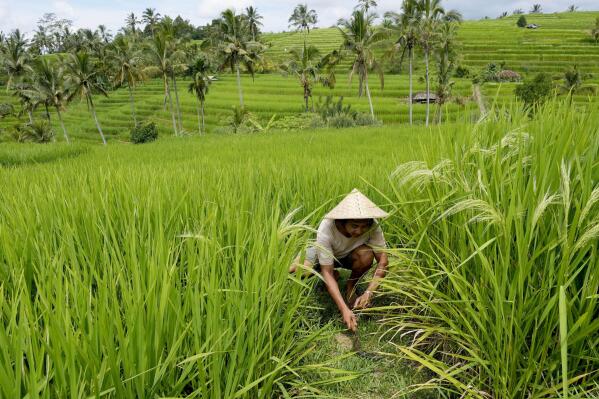
A farmer works in a field with a traditional terrace irrigation system called a “subak’ in Jatiluwih in Tabanan, Bali, Indonesia, Monday, April 18, 2022. Bali faces a looming water crisis from tourism development, population growth and water mismanagement, experts and environmental groups warn. While water shortages are already affecting the UNESCO site, wells, food production and Balinese culture, experts project these issues will worsen if existing policies are not equally enforced across the entire island. (AP Photo/Tatan Syuflana)
A man washes his face from water in Munduk, Bali, Indonesia, Sunday, April 17, 2022. In less than a decade, Bali’s water table has decreased over 50 meters (164 feet) in some areas, raising concerns that it could lead to worsening water crisis on the tropical tourist destination. (AP Photo/Tatan Syuflana)
Tourists walk near rice fields irrigated by a traditional terrace system called a “subak” in Jatiluwih in Tabanan, Bali, Indonesia, Monday, April 18, 2022. Bali faces a looming water crisis from tourism development, population growth and water mismanagement, experts and environmental groups warn. While water shortages are already affecting the UNESCO site, wells, food production and Balinese culture, experts project these issues will worsen if existing policies are not equally enforced across the entire island. (AP Photo/Tatan Syuflana)
A man collects water from the Tamblingan lake in Buleleng Bali, Indonesia, Saturday, April 16, 2022. In less than a decade, Bali’s water table has decreased over 50 meters (164 feet) in some areas, raising concerns that it could lead to worsening water crisis on the tropical tourist destination. (AP Photo/Tatan Syuflana)
A farmer work in a field with a traditional terrace irrigation system called a “subak” in Jatiluwih in Tabanan, Bali, Indonesia, Sunday, April 17, 2022. Bali faces a looming water crisis from tourism development, population growth and water mismanagement, experts and environmental groups warn. While water shortages are already affecting the UNESCO site, wells, food production and Balinese culture, experts project these issues will worsen if existing policies are not equally enforced across the entire island. (AP Photo/Tatan Syuflana)
Motorists ride past rice fields fed by a traditional terrace irrigation system called a “subak” in Jatiluwih in Tabanan, Bali, Indonesia, Monday, April 18, 2022. Bali faces a looming water crisis from tourism development, population growth and water mismanagement, experts and environmental groups warn. While water shortages are already affecting the UNESCO site, wells, food production and Balinese culture, experts project these issues will worsen if existing policies are not equally enforced across the entire island. (AP Photo/Tatan Syuflana)
A fisherman rows his boat on the Tamblingan lake in Buleleng, Bali, Indonesia, Saturday, April 16, 2022. In less than a decade, Bali’s water table has decreased over 50 meters (164 feet) in some areas, raising concerns that it could lead to worsening water crisis on the tropical tourist destination. (AP Photo/Tatan Syuflana)
- Copy Link copied
JATILUWIH, Indonesia (AP) — Far from Bali’s beaches and hotels, farmer I Ketut Jata stands on a mountainside, staring at terraced land that is too dry to grow the rice his family has long relied on for food and income.
“It is no longer possible to work in the fields as a farmer,” he says.
Bali’s water crisis is worsening from tourism development, population growth and water mismanagement, experts and environmental groups warn. Water shortages already are affecting UNESCO sites, wells, food production and Balinese culture and experts say the situation will deteriorate further if existing water control policies are not enforced across the island.
A tropical, volcanic island in the center of Indonesia’s archipelago, Bali relies on water from three main sources: crater lakes, rivers and shallow groundwater. A unique traditional irrigation system, called the “subak,” distributes water through a network of canals, dams and tunnels.
The subak, made a UNESCO site in 2012, is central to Balinese culture, representing the Balinese Hindu philosophy of “Tri Hita Karana”— harmony between people, nature and the spiritual realm.
“This is one of the very special cases of living landscapes in Asia,” said Feng Jing, who works with UNESCO in Bangkok.
Pressures are severely straining the subak and other water resources, says Putu Bawa, project manager for the Bali Water Protection program, led by a Bali-based nongovernment organization, the IDEP Foundation.
The island’s population jumped more than 70% from 1980 to 2020, to 4.3 million people, according to government census data. Tourism growth has been even more explosive: Less than 140,000 foreign visitors came to the island in 1980. By 2019, there were more than 6.2 million foreign and 10.5 million domestic tourists.
With the tourism boom, Bali’s economy has prospered — at a cost. Rice fields the subak once coursed through have been turned into golf courses and water parks, while forests that naturally collect water and are vital to the subak have been felled for new villas and hotels, Bawa said.
Stroma Cole of the University of Westminster, who has researched tourism’s impact on Bali’s water supplies, says another issue is that the water table is dropping because of Bali’s residents and businesses rely on unregulated wells or boreholes for clean water, instead of government-owned piped supplies.
“At the moment, it is the cheapest source of water for people to use,” Cole said. “So why wouldn’t you use that?”
In less than a decade, Bali’s water table has sunk more than 50 meters (164 feet) in some areas, according to data provided by IDEP. Wells are running dry or have been fouled with salt water, particularly in the island’s south.
Bali does have regulations — such as water licenses and taxes on water used — that are meant to manage the island’s water supplies, but there’s no enforcement, Cole said.
“The rules which exist are excellent rules, but they are not enforced” she said.
Bali’s municipal water agency and Bali’s department of public works did not respond to requests for comment.
The dire impact of the water crisis can be seen in Jatiluwih, in northwestern Bali, where farmers tend to the island’s largest rice terraces.
For generations lush green rice terraces have relied on the subak system for irrigation. But in the past decade, farmers have had to import and pump water through white plastic pipes to irrigate the fields.
Back in central Bali, Jata said he tried planting cloves, which require less water. But the land — which is ideal for rice — and a lack of subak water thwarted that plan.
“In the past, when the subak was active, the water was still good,” Jata said. “But so far there have been no results ... all the cloves are dead.”
Other Bali farmers say they can only get one rice harvest instead of two or three a year due to water disruptions, according to Cole’s research. That could reduce food production on the island.
When Indonesia closed its borders at the height of the pandemic, Bali’s tourism dropped drastically. Environmentalists hoped the closure would allow the island’s wells to recharge. IDEP is currently installing sensors in wells across the island to better research monitor water levels.
But development across the island has continued, including a new government-backed toll road that activists say will further disrupt the subak system. New hotels, villas and other businesses are adding to demand.
Tourism is key to Bali but there also should be better enforcement and increased monitoring to protect the island’s water resources, Bawa said. “We need to do this together for the sake of the survival of the island.”
Associated Press photojournalist Tatan Syuflana contributed from Indonesia.
Follow Victoria Milko on Twitter: @thevmilko
The Associated Press Health and Science Department receives support from the Howard Hughes Medical Institute’s Department of Science and Educational Media Group. The AP is solely responsible for all content.
An official website of the United States government
The .gov means it’s official. Federal government websites often end in .gov or .mil. Before sharing sensitive information, make sure you’re on a federal government site.
The site is secure. The https:// ensures that you are connecting to the official website and that any information you provide is encrypted and transmitted securely.
- Publications
- Account settings
Preview improvements coming to the PMC website in October 2024. Learn More or Try it out now .
- Advanced Search
- Journal List
- Int J Environ Res Public Health

Healthy Water-Based Tourism Experiences: Their Contribution to Quality of Life, Satisfaction and Loyalty
Ana maría campón-cerro.
1 Department of Business Management and Sociology, School of Business Studies and Tourism, University of Extremadura, Avda. de la Universidad s/n, 10071 Cáceres, Spain; se.xenu@zedrehmj
Elide Di-Clemente
2 Department of Business Management and Sociology, Research Institutes, LAB 0L3, University of Extremadura, Avda. de las Ciencias s/n, 10004 Cáceres, Spain; se.xenu@etnemelcide
José Manuel Hernández-Mogollón
José antonio folgado-fernández.
3 Department of Financial Economics and Accounting, School of Business Studies and Tourism, University of Extremadura Avda. de la Universidad s/n, 10071 Cáceres, Spain; se.xenu@odaglofaj
The scientific literature on tourism identifies two driving trends: the quest for experientiality and the growing connection between holidays and quality of life. The present research focuses on water-based activities practiced with a healthy purpose, capable of driving positive economic, social and environmental effects on the territory where this type of tourism is developed. Considering the growing demand of experiential tourism, it is important to assess the experiential value of these practices and their impact on the quality of life, satisfaction and loyalty. A sample of 184 customers of thermal spas and similar establishments was used to test the structural model proposed, employing the partial least squares technique. The results show the experiential value of healthy water-based activities and confirm their positive impact on the individuals’ quality of life, satisfaction and loyalty towards both the experience and the destination.
1. Introduction
The tourism industry is undergoing a substantial change. The advance in new technologies and a skilled and demanding consumer target means that the organisations and destinations need new marketing and management tools to meet the modern tourists’ expectations and the industry’s requirements for innovation [ 1 ].
The scientific literature on tourism issues identifies two driving trends: the quest for experientiality and the growing connection existing between holidaymaking and perceived improvements in individuals’ quality of life. The former is forcing the tourism sector to face a new competitive scenario. Increasing importance is being given to the emotional value of the tourism experiences offered, leaving in the background their functional properties [ 2 ]. The latter is a facet of the tourism phenomenon which is gaining momentum in recent times. Tourism literature has shown a growing consensus about the benefits that individuals can get from tourism experiences and meaningful travel [ 3 , 4 , 5 , 6 ].
In this new experiential stream, tourism businesses face the challenge of changing their business and commercial strategies and improving the affective components of their products, that is, being able to deliver pleasant sensations and memories to the consumer, as well as ensuring the practical functionality of the goods/services offered [ 7 ]. The functional qualities of a tourism proposal are no longer considered differentiators and are not enough to capture the attention and the preferences of consumers.
Considering the preceding, the tourism industry is in need of drawing innovative tourism proposals in line with the recent requirements of modern tourists who see in holidaymaking a possible avenue to pursue happiness [ 8 ]. However, still very little is known about how tourism contributes to quality of life and whether some specific practices are more suitable than others to turn holidays into significant enhancers of personal happiness [ 9 ].
According to Nawijn [ 10 ], ‘in the light of the experience economy’ (p. 560), the tourism industry could improve its performance and foster the effect that holidays have on happiness, giving more attention to the experiential content of the tourism offered, and thus, understanding what causes happiness. The author realises that certain types of holidays are worth further examination to this extent, as they show the potential to positively impact tourists’ happiness. The ones he suggests are wellness tourism, promulgating physical and psychological recovery, or slow tourism, suggesting people should travel with slower means of transport in order to enjoy the trip and experience relaxed rhythms. Based on this consideration, the present research focuses on water-related activities practiced with a healthy purpose, that besides their experiential potential due to the sensorial properties of water (unique touch, sounds, flavours, colours, cold or hot feelings, etc.), accomplish the objective of preserving water resources and ecosystems from contamination, which is often the case of the touristic use of water [ 11 , 12 ]. In fact, natural water resources, such as rivers, lakes, streams, wetlands, aquifers and estuaries, are often jeopardised by people’s use, forcing a change in water policies and management [ 13 ].
Water is for sure a resource with an inestimable environmental value, which unfortunately is not sufficient to preserve it from misuses. Draper [ 14 ] points out that a wise management of water resources needs a commitment with a dynamic economy, social equity and healthy environment. Even if tourism is traditionally considered a water-consuming industry whose impact on its conservation is usually assessed to be more negative than positive, it is possible to encourage a proper and sustainable tourism use of water resources.
Tourism can contribute to this objective by means of giving to intangible water heritages a tangible value, that is, an economic (besides environmental) value in order to save it and its connected water-based ecosystems and biodiversity from destruction. Water-based experiences are potential solutions to preserve both the environmental and the economic value of water, and its tangible and intangible heritage [ 15 ]. However, Essex et al. [ 16 ] claim that ‘there is little research on the significance of water in tourism development’ (p. 6). In the same line, Jennings [ 17 ] maintains that the theme of water-based experiences in tourism has been little explored. Therefore, this work turns the spotlight onto tourism experiences based on water natural resources and settings with the aim of exploring their touristic value within the new experiential context.
Luo et al. [ 18 ] assert that experience economy research has not focused on the customer experience in wellness tourism, and also claim that it is relevant to understand how visitors achieve a bettering of their quality of life through this type of tourism.
The most renowned water-based activities related to health are the visits to thermal spas and similar establishments (spas, Arab baths, etc.) [ 17 ]. However, there are other activities that involve water as a key element, and these are the enjoyment of landscapes and soundscapes related to water, visiting fluvial beaches, trekking through routes with water resources, enjoying river boat trips and watching aquatic birds. Moreover, drinking mineral and medicinal waters provides significant benefits for human health. Restaurants have begun offering a water menu along with the wine menu. The recent concern about health and wellbeing that characterises modern society involves water as a functional element, where a conscious consumption can enhance personal wellness. This trend contributes to generating a new ‘water culture’ [ 19 ] that can lead to the development of innovative initiatives in the tourism sector, addressed to those consumers who will benefit from water properties in places where this element is a central attraction. The rise of a new ‘water culture’ can have beneficial effects on both individuals’ health and on tourism destinations’ economies.
Therefore, it is important to assess the potential of these tourism experiences linked to water and health and their impact on outcome variables such as the tourists’ satisfaction, loyalty and quality of life. Water-based experiences can generate long-term revenue, driving positive behavioural intentions. The main objective of this research is to analyse water-based tourism experiences as a strategy capable of fostering the tourists’ satisfaction, quality of life, and positive future behaviours. As a consequence, water-based experiences could be assumed as capable of enhancing the economic, social and environmental sustainability of a destination where singular hydrographical resources are placed. This work tries to assess tourism activities based on binomial water-health through the experience model proposed by Pine and Gilmore [ 20 ]. This is an original contribution to tourism research as it is the first attempt: (1) to obtain an integrative perspective about the phenomenon of tourism experiences based on water and health; (2) to offer new ideas for tourism products development using water in a non-consumptive way, in line with the modern tourists’ demand of experientiality and wellbeing; (3) to test whether water-based activities accomplish the objective of enhancing individuals’ quality of life which, in turn, can contribute to driving tourists’ loyal behaviours.
The results achieved offer insightful ideas for the elaboration of new experiential proposals and show marketers and practitioners the most suitable actions to undertake in order to satisfy current tourism demand, expecting travel to be a changing and once-in-a-lifetime experience, using water as a tourism attraction from an environmentally respectful perspective.
2. Materials and Methods
2.1. experiential tourism: the experience and its dimensions.
The theoretical background that supports the hypotheses’ definition and operationalization of the concepts involved in this research has to be seen in the theory of experience economy and its application in the tourism industry. The rise of the experiential trend in modern economies is nowadays bringing the hospitality and tourism sector into a new competitive stage. New technological advances and the easy access to information have meant that those elements traditionally designed to differentiate what is being offered in the market can be easily replicated by competitors, nullifying their differential power and making them interchangeable in consumers’ eyes [ 21 ]. According to Jensen and Prebensen [ 22 ], experience-based tourism can be considered an offer that differentiates itself from more conventional tourism practices due to its intangible and emotional value which is what modern tourists seek and appreciate most in their holiday time. Therefore, the tourism industry faces the challenge of turning its proposals into experiences and providing what is currently being offered with a new emotional and intangible value in order to identify new competitive advantages [ 23 ].
Water and tourism have traditionally been studied from two different focal points: the environmental concern, as tourism activities are water-consuming and polluting practices [ 11 ]; and the health and wellness perspective, with a specific reference to thermal and spa activities [ 24 , 25 ]. This work considers the water-tourism connections under this second approach and highlights the experiential value of water-related tourism practices.
Health and wellness tourism has recently been a focus of attraction in tourism research as, nowadays, people are particularly sensitive to safeguarding their personal wellness and conducting a healthy lifestyle [ 3 ]. As a consequence, the concept of health has widened its boundaries, being a synonym for happiness, wellbeing and long life, and more than just the absence of diseases [ 25 ]. This new social consciousness introduces some changes regarding tourists’ decisions and preferences and offers some new opportunities for tourism destinations’ management and innovation.
Besides rest and relaxation, physical and psychological recovery, modern tourists have an expectation of personal enrichment in their holidays [ 26 ]. In this line, experiential travel and healthy practices may provide benefits to tourists beyond satisfaction and enjoyment [ 4 ], contributing to enhancing their perception of personal quality of life [ 8 , 9 ].
Pine and Gilmore [ 20 ] made the most significant contribution to the definition of the experience concept. The authors developed a conceptual model defining experiences which has been largely applied to assessing experientiality in different tourism contexts [ 27 , 28 , 29 ]. The authors describe experiences by means of two dimensions: participation and connection, embedded in a spectrum from passive to active, and from absorption to immersion. The participation implies that consumers are impacted by the experience, while the connection dimension assesses the degree to which the tourists themselves impact the experience, contributing to its creation [ 20 ]. The intersection of these two dimensions gives birth to four realms defining the experience concept, also known as the 4Es’ model, as its components are entertainment, education, esthetics and escape.
The water-related activities considered in this research have a high experiential potential. At a conceptual level they fit the model proposed by Pine and Gilmore [ 20 ]. With regard to the ‘escape’ component, these activities are often held in outstanding natural settings which induce the feeling of escaping from the daily contexts. The physical contact with water has a relaxing power due to the feeling of the lack of body weight perceived while immersed. Therefore, tourists who decide to practice these activities have, in water, an effective vehicle to escape from stress and routine. The ‘esthetics’ dimension is provided by the beauty of the landscapes related to water. Healthy water-related activities are ‘educational’ as tourists who choose these practices can learn about the beneficial properties of water for human health and differentiate between the kinds of waters and the effects of its uses. Finally, water-based experiences provide ‘entertainment’ with activities such as observing landscapes, the contemplation of sounds and the colours of water, and the enjoyment of baths and water-treatments.
2.2. Variables and Hypotheses Definition
2.2.1. experiential satisfaction.
According to Kim et al. [ 30 ], research on travel and tourism has largely examined the tourists’ satisfaction concept. Similarly, Neal and Gursoy [ 31 ] assert that customer satisfaction is frequently examined for being a topic capable of enhancing the destination’s competitiveness by means of inducing loyal behaviors and intentions of revisiting the destination in the future [ 32 ].
The new experiential push that pervaded the tourism industry, as well as the whole modern economy, entailed some changes in the treatment of satisfaction. This variable has been traditionally considered to be predicted by functional factors (i.e., quality, value and image) [ 30 , 33 ]. However, few researches offer useful insights demonstrating that new affective and emotional concepts, such as pleasure, arousal, joy, love, positive surprise, mood and hedonics, are gradually integrating [ 7 , 34 , 35 ] or even substituting the traditional utility-based approach to satisfaction [ 7 , 36 , 37 ]. Satisfaction is considered a key driver for customer experience assessment [ 38 ].
Scientific literature provides numerous evidences supporting the relationship between emotions and satisfaction [ 36 ] and shows that a growing consensus exists on the need to incorporate emotional and affective components in the assessment of this variable [ 39 ]. Lin and Kuo [ 40 ] found proof of the relationship between tourist experience and satisfaction. Agyeiwaah et al. [ 41 ] demonstrate the relationship in the context of culinary tourism, Ali et al. [ 42 ] in creative tourism, and more specifically, Luo et al. [ 18 ] in wellness tourism experiences.
According to Pine and Gilmore [ 43 ] the 4Es’ model leads to satisfaction. Some researchers have already tested the relationship between the experience concept and satisfaction. Oh et al. [ 29 ] found significant evidence linking the esthetic component of the experience and satisfaction. Similarly, Hosany and Witham [ 28 ] demonstrated that esthetics and entertainment significantly contribute to satisfaction. Quadri-Felitti and Fiore [ 27 ] empirically showed the positive relationship between education and esthetics on satisfaction. Considering the preceding, the following hypothesis is proposed:
Healthy water-based experiences have a positive impact on tourists’ experiential satisfaction.
2.2.2. Quality of Life
Holidays are generally considered events that increase wellbeing and quality of life [ 44 ]. Research on quality of life regarding the tourism experience is an emerging area of study, considered as an important field of tourism studies because of its relationship with short-term and long-term effects on individuals, on businesses, and on society [ 38 ]. According to Luo et al. [ 18 ] since the past decade, wellness tourism has been a booming industry, making it relevant to understand how visitors achieve quality of life through the wellness experience, in which healthy water-based tourism experiences has to be included.
Connections between tourism and quality of life have started to be explored and have recently become a focus in tourism studies [ 45 ]. Many authors started to test the potential relationship that exists between tourism experiences, travellers’ satisfaction and tourists’ happiness [ 3 , 8 , 9 , 46 , 47 ]. Gilbert and Abdullah [ 48 ] suggest that holidaymaking can improve the level of happiness experienced by tourists. Similarly, Puczkó and Smith [ 49 ] define holidays as ‘a state of temporary happiness’ (p. 265) associated with some specific activities and behaviours that people have while on holidays.
Neal et al. [ 46 ] in their study on vacation experience and quality of life showed that satisfaction with tourism services is a positive determinant of overall quality of life. More specifically, within the experiential context, Kim et al. [ 26 ] confirms that a strong relationship links satisfaction with a travel experience together with the individuals’ perception of their overall quality of life. Luo et al. [ 18 ] found that in wellness tourism visitors’ satisfaction with experiences predict quality of life. This supports the following hypothesis:
Experience satisfaction has a positive impact on tourists’ quality of life.
2.2.3. Loyalty
Loyalty is a traditional marketing outcome where the importance has been increasingly recognised in tourism and hospitality research [ 50 ]. Satisfaction is often considered a significant determinant of loyalty and future behaviour intentions [ 51 , 52 ]. It could be thought that providing satisfying experiences will possibly drive loyal behaviours in the future, which usually coincides with positive word-of-mouth and revisiting intentions. However, the tourism market is in constant change and new trends in consumers’ desires and needs bring tourism marketing to face ever-new challenges that make it more difficult for the plain satisfaction-loyalty binomial to remain effective. Kim and Ritchie [ 53 ] maintain that satisfaction alone is no longer enough to drive positive future behaviours, as researches have noted that more than the 60% of satisfied costumers decide to switch to another firm. Thus, it has to be recognized that, in order for satisfaction to effectively result in loyal intentions, some other components should intervene.
Experientiality is challenging the traditional idea of loyalty [ 54 , 55 ]. The tourists’ search for unique experiences and wanderlust are forcing a reassessment of the concept in light of new experientiality. In this context, loyalty should be, on one hand, addressed towards new experience-related objects, rather than the destination (i.e., the kind of experience itself), and on the other, new antecedents should be involved in the loyalty-forming process (i.e., quality of life). As a consequence, this research considers loyalty towards two objects: the destination and the water-based experiences. In addition, quality of life is introduced in the conceptual model as an antecedent of both variables considered for loyalty.
Within the experiential literature, some studies confirm that experiential satisfaction is a direct antecedent of behavioural intentions [ 56 , 57 , 58 ] and that quality of life, or similar concepts, is a new antecedent of loyalty [ 26 , 54 , 59 ].
Literature points out that positive tourism experiences could enhance repeat visits and recommendations [ 41 ]. Wu and colleagues [ 56 , 57 , 58 ] provide empirical evidences supporting the theoretical relationship that links the experiential satisfaction with loyalty. The authors in their studies on theme parks [ 58 ], the golf industry [ 56 ] and heritage tourism [ 57 ] confirm that experiential satisfaction leads to loyal behaviours in the future. Other authors in other tourism contexts verified that relationship [ 40 , 41 , 42 ]. These results offer a valuable support to the following hypotheses:
Experiential satisfaction has a positive impact on loyalty to the experience.
Experiential satisfaction has a positive impact on loyalty to the destination.
With regard to the consideration of quality of life as a direct antecedent of loyalty, some valuable insights can be found in Kim et al. [ 26 ], Lin [ 54 ] and Kim et al. [ 59 ].
Kim et al. [ 59 ], in their study on chain restaurants, confirm that consumers’ wellbeing perceptions are the most powerful antecedents of future positive behaviours. Lin [ 54 ] shows that cuisine experiences and psychological wellbeing are important determinants of revisit intentions. Kim et al. [ 26 ], following a structural path starting from elderly tourists’ involvement in tourism experiences and resulting in revisiting intentions, showed how satisfaction and quality of life contribute to determine the tourists desire to revisit the destination. Their results confirm that quality of life is an effective predictor of loyal behaviours. Therefore, the following hypotheses are proposed:
Quality of life has a positive impact on loyalty to the experience.
Quality of life has a positive impact on loyalty to the destination.
The hypothesized relationships are graphically presented in Figure 1 .

Theoretical model.
3. Methodology
The study setting is the region of Extremadura, a southwest region of Spain, where water has been traditionally seen as an abundant resource. However, growing irrigation demands under a low price are outstripping the supply of raw water and competing with other uses [ 60 ], a challenge that could be faced with sustainable tourism practices. The region relies on more than 1500 kilometres of inland water, more than 60 natural-based bath areas and 7 thermal spas, according to the Touristic Plan of Extremadura 2017–2020 promoted by the Government of Extremadura. The data shapes the region as a destination to enjoy diverse tourism water experiences, and thus an excellent place to locate this study.
This research relied on an exploratory study using quantitative methodology to evaluate the proposed model through analyses based on structural equation modelling (SEM), due to its capacity to test several relationships established in a model that emerges from theory [ 61 ].
The population was identified in customers of thermal spas of Extremadura and other similar establishments. The tool used for data collection was a self-administered paper-based survey, complemented with an online survey.
The scales used to measure the variables of the model were validated in previous studies and have been adapted to the context of this research (see Table 1 ).
Scales used.
The questionnaire used multi-item scales rather than one-item scales, as suggested by MacKenzie et al. [ 63 ]. The indicators were measured on a five-point Likert scale.
The questionnaire was distributed to the customers enjoying thermal spa visits and other similar water-based experiences in Extremadura. The dissemination of the questionnaires was conducted using two procedures: a paper-based questionnaire in thermal establishments and an online questionnaire. To ensure that no biases were introduced in data analysis due to the use of two collecting procedures, a t-test for independent samples was performed. The results confirm the equality of means between the two groups of data. Only 2 out of 32 indicators showed statistically significant differences, thus the potential bias was minimal and can be assumed. The two subsamples have been unified for the model assessment.
A total of 184 completed questionnaires were collected between 3th of November and 24th of December of 2017, using a non-probability convenience sampling. The sample size is suitable as it accomplishes the criterion proposed by Hair et al. [ 64 ], who propose a minimum value for the item-response ratio between 1:5 and 1:10.
Following Hair et al.’s [ 61 ] guidelines, the partial least square (PLS) technique was considered the most appropriate method for the assessment of the hypothesised model versus models based on covariances, considering that it contains a second-order construct (experience) and reflective and formative indicators, thus a complex model structure. It is also appropriate for relatively small samples, as in this study. In addition, the PLS algorithm transforms non-normal data, so results are robust to the condition of normality [ 65 ]. The SmartPLS 2.0 M3 software (SmartPLS GmbH, Hamburg, Germany) was employed for the model evaluation, while the descriptive analysis and the collinearity test were performed with IBM SPSS Statistics, Version 22 (IBM Corp, Armonk, NY, USA)
4.1. Sample Profile
The sample was composed of 37.0% men and 57.6% women. Within this research, the tourists visiting thermal spas in Extremadura (Spain) came from other Spanish regions (56.7%), had a mature age (59.8% were ‘more than 55 years old’) and a high education level (36.4%) (see Table 2 ).
Socio-demographic sample profile ( n = 184).
Regarding the frequency that this sample engages in tourism experiences linked to the binomial water-health, 34.2% asserts that they only ‘sometimes’ practice this kind of activity, and 31.0% said ‘frequently’. This result points out that the users of thermal spas surveyed are loyal to tourism water-related experiences. With respect to the interest that respondents have in water-based experiences, the most valued one was ‘visiting health spas’ (3.87 out of 5 points), followed by ‘observing landscapes related to water’ (3.68), ‘visiting fluvial beaches’ (3.41) and ‘trekking routes related to water’ (3.35). It is important to highlight that the other rated activities, which were ‘visiting spas’, ‘river boat trips’, ‘watching aquatic birds’ and ‘asking for water menus in a restaurant’ have achieved a mean over 2.5. Respondents recognise the benefit that water-based tourism experiences have on health, considering the high scores registered by this indicator (4.24 out of 5). The sample also confirms a high interest in including water-based experiences in their trips (4.01). Hence, these activities reckon with the potential of a latent tourism demand. In addition, respondents appreciate water-based tourism experiences as potential enhancers of personal health (4.01) (see Table 3 ).
Opinion about water-based experiences.
4.2. Analysis of The Model
4.2.1. measurement model assessment.
Since the proposed model is multidimensional, the two-stage approach was selected for its assessment [ 66 ]. In order to perform the model assessment, this study followed the guidelines proposed by Wright et al. [ 67 ]. Following MacKenzie et al.’s indications [ 63 ], the constructs taken into account in the first step were considered reflective. Consequently, the measurement model was evaluated to assess the items’ reliability, internal consistency, convergent validity and discriminant validity [ 61 ]. Regarding individual reliability, all the indicators are above the acceptable threshold of 0.707 [ 61 , 68 ]. Construct reliability was measured through composite reliability (CR). According to Nunnally and Bernstein [ 69 ], the values obtained in this study are acceptable, being in the range of 0.60–0.70 (see Table 4 ).
Descriptive statistics and measurement model assessment: reflective indicators (I).
Note: a Critical t -values: * p < 0.05; ** p < 0.01; *** p < 0.001; ns not significant (based on t (4999), one-tailed test); t (0.05; 4999) = 1.645; t (0.01; 4999) = 2.327; t (0.001; 4999) = 3.092. b Composite reliability. c Average variance extracted.
With regard to convergent validity, the average variance extracted (AVE) is above 0.50, so all the constructs fall into the adequate parameters according to Hair et al. [ 61 ] (see Table 4 ). Discriminant validity is confirmed when the correlations between the constructs are lower than the square root of the AVE (values in bold in Table 5 ) [ 68 ].
Discriminant validity assessment (I).
a Quality of life. b Educational. c Entertainment. d Esthetics. e Escape. f Destination loyalty. g Experience loyalty. h Experience Satisfaction.
The scores resulting from the first step can now be used for the second step in order to model the second-order construct (experience). The aggregated scores, calculated by PLS for the experience construct, generate a new set of data to be used in the following analysis. The model shows a novel nomological structure, including reflective and formative variables, that needs to be assessed in its measurement and structural validity. The experience construct now acts as formative [ 63 ]. Moreover, the dimensionality of experience, proposed by Pine and Gilmore [ 20 ], has been widely confirmed in previous research and this is assumed to be further evidence supporting the formative nature of the construct.
The reflective measurement model was analysed by repeating the steps described above. The analysis of items’ reliability, CR and AVE revealed a satisfactory evaluation (see Table 6 ).
Measurement model assessment: reflective indicators (II).
Table 7 shows that discriminant validity is demonstrated.
Discriminant validity assessment (II).
a Quality of life. b Destination loyalty. c Experience loyalty. d Experience Satisfaction.
The evaluation of a formative measurement model required an examination of any possible multicollinearity between the indicators, an assessment of the weight of each indicator and a review of their significance. For all the indicators, the variance inflation factor (VIF) was below 5 [ 61 ]. Therefore, no problem was found with multicollinearity between the indicators of the experience construct. The weights of the indicators entertainment and escape are statistically significant. However, the weights of the indicators educational and escape are not significant. Nevertheless, some authors recommend maintaining the items, as long as their loadings are statistically significant, at a confidence level of 99%, and absence of multicollinearity is assured [ 70 ] (see Table 8 ).
Collinearity statistics and analysis of formative indicators.
a Variance inflation factor. b Critical t -values: * p < 0.05; ** p < 0.01; *** p < 0.001; ns not significant (based on t (4999), two-tailed test); t (0.05; 4999) = 1.65; t (0.01; 4999) = 1.96; t (0.001; 4999) = 2.58. c Educational. d Entertainment. e Esthetics. f Escape.
4.2.2. Structural Model Assessment
R 2 of each dependent construct needs to be analysed, as well as the paths’ significance, by using the bootstrapping method [ 61 ]. Table 7 shows the R 2 values for the endogenous variables. The best explained variable is experience loyalty (67.1% or substantial-moderate), followed by destination loyalty (64.7% or substantial-moderate), experience satisfaction (51.9% or moderate) and, finally, quality of life (46.0% or moderate). This table also shows how much the predictive variables contribute to the explained variance of the endogenous variables [ 71 ]. The analysis of the structural paths’ significance was done with the bootstrapping method, following Hair et al.’s [ 61 ] guidelines. All the hypotheses are statistically significant (see Table 9 ).
Effects on endogenous variables and structural model results.
Notes: a R 2 value of 0.75, 0.5 or 0.25 for the latent endogenous variables in structural models can be considered substantial, moderate or weak, respectively [ 61 ]. b Critical t -values: * p < 0.05; ** p < 0.01; *** p < 0.001; ns not significant (based on t (4999), one-tailed test); t (0.05; 4999) = 1.645; t (0.01; 4999) = 2.327; t (0.001; 4999) = 3.092.
Figure 2 graphically presents the results of the measurement and structural model assessment.

Graphical summary of the model assessment. * ENT: Entertainment. EDU: Educational. ESC: Escape. EST: Esthetics. EXP: Experience. ESA: Experience Satisfaction. QOL: Quality of life. ELO: Experience loyalty. DLO: Destination loyalty.
5. Discussion
The model proposed in this study provides a better comprehension of the impact of healthy water-based tourism experiences in perceived quality of life, satisfaction and loyalty. It has been empirically validated supporting all the model hypotheses established from the literature review. Thus, the results show the importance of offering experiential value with tourism products in the context of tourism experiences based on water and health. The model offers a substantial-moderate capacity to explain the variation of the endogenous variables, which are experience satisfaction (R 2 = 51.9%), quality of life (R 2 = 46.0%), experience loyalty (R 2 = 67.1%) and destination loyalty (R 2 = 64.7%). It is worth noting the role of experience satisfaction in determining experience loyalty (42.4%) and destination loyalty (56.4%). The positive relationship between satisfaction and loyalty has been largely confirmed in scientific literature [ 51 , 52 ] and it is further proven in the context of healthy water-based tourism experiences.
It is important to highlight the positive impact that the experience variable exerts on experience satisfaction (β = 0.720 ***) (H1+). This result is consistent with past research [ 40 , 41 , 42 , 43 ], and more specifically with Luo et al.’s [ 18 ] research that verified the relationship between wellness tourism experience and satisfaction.
An assessment of the dimensionality of the experience reveals that entertainment and esthetics are the most determining factors of the construct. This result is closely related to the outcomes reached by Oh et al. [ 29 ] and Hosany and Witham [ 28 ] who found a key role of these components versus education and escape. Similarly, Quadri-Felitti and Fiore [ 27 ] identified the impact of esthetic on satisfaction. According to Oh et al. [ 29 ], these findings suggest the relative importance of the four realms of the experience proposed by Pine and Gilmore [ 20 ] depending on the study context. The results of this research, showing the remarkable relevance of the entertainment and esthetics dimensions, is reasonable if considering that baths and water treatments are enjoyable practices and that water with its shapes, sounds, movements and colours embellishes outdoor and indoor spaces.
The education and escape dimensions turned out to be of lower importance. Regarding the former, an explanation exists that can be found in the low consciousness about the properties that water has on human health, and a general lack of ‘water culture’. The latter can be explained by the therapeutic focus of many thermal spas and similar establishments. This can introduce the feeling of being involved in medical practices to address health problems or ailments more than in pleasant activities capable of taking tourists away from daily problems and worries. This may suggest the importance of complementing the traditional thermal spas’ offerings with new proposals related with the enjoyment of water and more focus on wellbeing rather than on health. In short, education and escape may become more important dimensions when a water culture has gained force.
Even if statistics do not fully support the role of education and escape as determining factors of the experience construct as their weights turned out to be non-significant, they still make a contribution to the definition of the experience variable according to their loadings’ scores (see Table 6 ). Therefore, they cannot be disregarded.
Regarding the link between experience satisfaction and the individual’s quality of life (H2+), the findings of this study are consistent with the ones obtained by Neal et al. [ 46 ] and Kim et al. [ 26 ]. The results also confirm the strength of this relationship (β = 0.678 ***), concluding that healthy tourism water-based experiences are effective enhancers of quality of life.
In line with Neal et al. [ 46 ], this research supports the idea that the tourism industry provides ‘experiences that offer enduring types of satisfaction that positively impact the overall quality of life of those participating in the tourism experience’ (p. 162). These results are also in accordance with Luo et al.’s [ 18 ] findings in wellness tourism.
The proposed model also demonstrates the relationship between experience satisfaction and loyalty in accordance with general marketing literature [ 52 ] and similar studies [ 40 , 41 , 42 ]. Following other authors [ 54 , 55 ], this work challenges the traditional conceptualisation of loyalty by considering two objects towards which loyal behaviours can be prompted: the destination and the kind of experience itself. Under this original approach, this research confirms the direct impact that experiential satisfaction exerts on both experiential loyalty (H3+) (β = 0.545 ***) and on destination loyalty (H4+) (β = 0.707 ***).
This study also finds support for the relationship between quality of life and loyalty, which is in line with the outcomes of other authors [ 26 , 54 , 59 ], validating the importance of quality of life as an effective predictor of loyalty behaviours. However, some specifications are needed in the context of this research. The direct impact that quality of life has on destination loyalty is low (H6+) (β = 0.135 *) if compared with the one it exerts on experiential loyalty (H5+) (β = 0.346 ***). Then, it can be affirmed that in experiential contexts with healthy water-based tourism, the perceived enhancement of quality of life is a more effective driver of loyal intentions towards the experience rather than for loyalty towards the destination. Therefore, experiences appear to be more valuable tools than destinations in the loyalty formation process, which is possibly even more noticeable in experiences that have the potential of enhancing an individual’s health.
The positive results obtained by the proposed model support the suitability of considering healthy water-based tourism experiences as a strategy which capitalises water in a sustainable way and fosters economic and social benefits. The former are achieved with the creation of an innovative tourism proposal capable of diversifying the offer of a territory that counts with bodies of water that have marked the landscapes and lifestyles. This diversification of the tourism industry has a positive direct impact on economic revenues and employment. The latter, that is, are social benefits that are referred to two beneficiaries: tourists and residents. Travellers directly benefit from the contact of a new tourism attraction that provides them physical and mental wellbeing and recovery. Indirectly, residents can enjoy the network of infra-structures and services developed for the water-based tourism activity, even more important in rural and depopulated settings. Thus, quality of life is not only promoted for tourists, but also for the residents of the territories in which the tourism activity is developed.
In addition, it is essential to take into account the development of this type of destination and tourism products from a structured planning point of view. In tourism it is vital to plan bearing in mind the application of sustainable criteria, which is more important in fragile settings such as the ones with water resources. This is one of the most important requirements to implement a successful tourism development strategy in the long term.
6. Conclusions
In this work we explore the impact that tourism water-based activities practiced with a healthy purpose have on significant marketing outcomes such as satisfaction, loyalty and individuals’ quality of life. By applying the 4Es’ model [ 20 ], the dimensions of entertainment and esthetics were the most influential in creating experiences in the context considered for this study. As other authors did before in different contexts [ 27 , 28 , 29 ], this research validated, for the first time, the 4Es’ model in water-and-health tourism.
This work offers an original perspective on how tourism experiences based on water and health can be considered and implemented as a strategy. The main contribution of the study is the confirmation that water-based practices offer experiential value to tourists and exert a positive impact on tourists’ quality of life, satisfaction and loyalty. Those results open a wide ground field of study where water is the central resource supporting new proposals. Water-based experiences can be considered the seed of a new value for water, which in turn can develop and commercialise healthy water-based tourism experiences that can foster economic and social benefits. Given that, the promotion of this new water culture through tourism could enhance the consciousness about the importance of implementing smart and sustainable water management strategies in order to assure the preservation of this essential resource.
The theoretical contributions of this work are threefold. Firstly, it is confirmed that tourism activities based on water and health are perceived as tourism experiences, according to the 4Es’ model [ 20 ], whose scale has been validated in the context of this research. Secondly, the results achieved offer empirical support to the structural model proposed which suggests that the experiences based on water and health have a positive impact on satisfaction, quality of life and loyalty. Finally, this research puts forward a brand-new approach for satisfaction and loyalty. These two variables are studied towards the tourism experience itself, rather than measuring the tourists’ satisfaction with regard to functional elements and loyalty towards the destination.
The results of this research have useful practical implications for those companies and destinations that have in water and health their main tourism attractions and that wish to turn their offers into more experiential proposals. The study suggests that, in order to foster experientiality in water-based activity, it would be recommendable to put forward tourism products that combine the visits to thermal spas and treatments with other offers, such as nature-based activities, wellness practices (e.g., yoga and mindfulness) and experiences focused on raising a new awareness for the benefits of water on human health.
The study’s findings show how tourism products linking water and health are a suitable response to the current desires and needs of modern tourists, increasingly interested in living authentic, educational and emotional experiences during their holiday time [ 1 , 7 ]. Moreover, this research confirms the important role that water-based experiences have on enhancing the tourists’ perceptions of quality of life, and how this drives tourists’ satisfaction and future loyal behaviours, with a special emphasis on behavioural intentions towards a specific kind of experience (water-based in this context). This suggests that, in the current experiential trend, managers and practitioners need to pursue loyal clients by focusing on the promotion of experiences more than the destination’s attributes in order to better their performances and increase their revenues.
In the context of natural settings, the quest for loyalty from tourists who are interested in healthy water-based tourism experiences has to be interpreted as a sustainable strategy to manage water in the long-term. If healthy water-based tourism experiences were promoted from a natural resources point of view, noticeable benefits for nature, individuals, companies and local residents could be obtained through quality of life and economic and social benefits, which can definitively endorse preserving natural environments and fostering a ‘water culture’.
Finally, the use of bodies of water for tourism purposes generates a net of interests for the protection of water’s quality not just for its environmental value, but also for being economically worthy as the engine of a new economic and social push. Water-based experiences have the power of revitalising rural economies, generating new employment opportunities, saving decaying societies and, most importantly, encouraging a respectful and long-lasting use of water.
The limitations and delimitations of this study have to be seen in the use of a non-probability sampling procedure, which could limit the results’ generalisability. The combination of a paper-based and an online technique for data collection may have introduced some bias, even though it did not compromise the validity of the results according to the outputs of a t-test performed. Despite these limitations, this research can possibly contribute to the identification of a new research line linking water and tourism that can add new knowledge to the experience and wellness tourism literature.
The study was applied in thermal spas and similar establishments. Future research could be focused on nature-based activities related to water, which may offer more consistent results from the application of the 4Es’ model [ 20 ]. This may allow a greater generalisation of this study’s results and provide significant contributions to other kinds of destinations and companies that use water as a main tourism attraction.

Acknowledgments
Project co-funded by FEDER and Junta de Extremadura (Spain) (Reference No. GR18109).
Author Contributions
Conceptualization, A.M.C.-C. and E.D.-C.; methodology, A.M.C.-C., J.M.H.-M.; resources, J.A.F.-F.; data curation, J.A.F.-F.; writing – original draft preparation A.M.C.-C.; writing – review & editing, E.D.-C.; supervision, J.M.H.-M. All authors have read and agreed to the published version of the manuscript.
Conflicts of Interest
The authors declare no conflict of interest.

We Are Water
- Donate Donate
Get news and insights

@Carlos Garriga – We Are Water Foundation
Saving water, the first step towards sustainable tourism
- Share on Facebook
- Share on Twitter
- Share on LinkedIn
- Share by WhatsApp
- Smart water
- Sustainable development
Tourism is one of the key industries for international economic recovery after the pandemic, especially for developing countries. It is also key for the sustainability of the planet. Reducing the consumption of water is a priority first step.
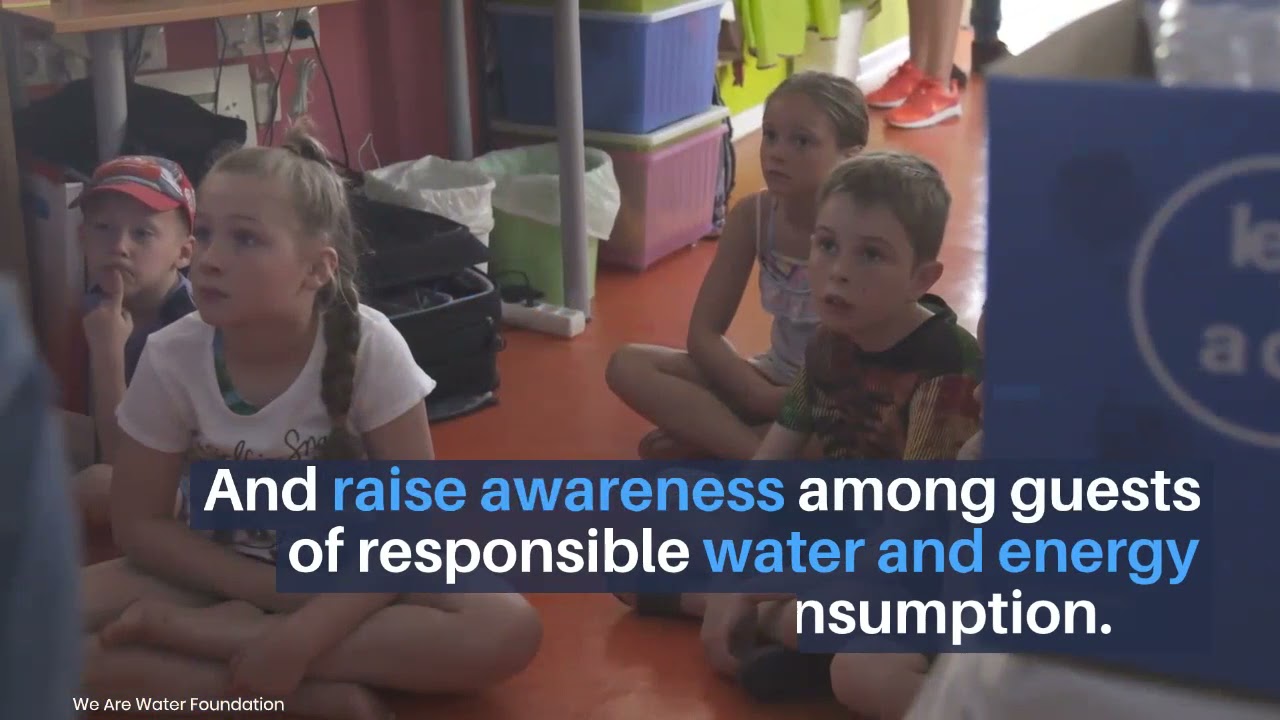
Saving millions of liters of water, raising the awareness of guests of the importance of sustainable practices, turning them into communication agents in their homes and obtaining donations for aid projects in India , Guatemala and Indonesia are achievements that might have seemed overoptimistic a few years ago. Let’s Make a Deal , the initiative developed during the 2018 tourist season with Diamond Resorts , was able to do it. It was an eye-opening experience of the role of tourism as an effective awareness-raising factor in the importance of sustainability in the use of the water.
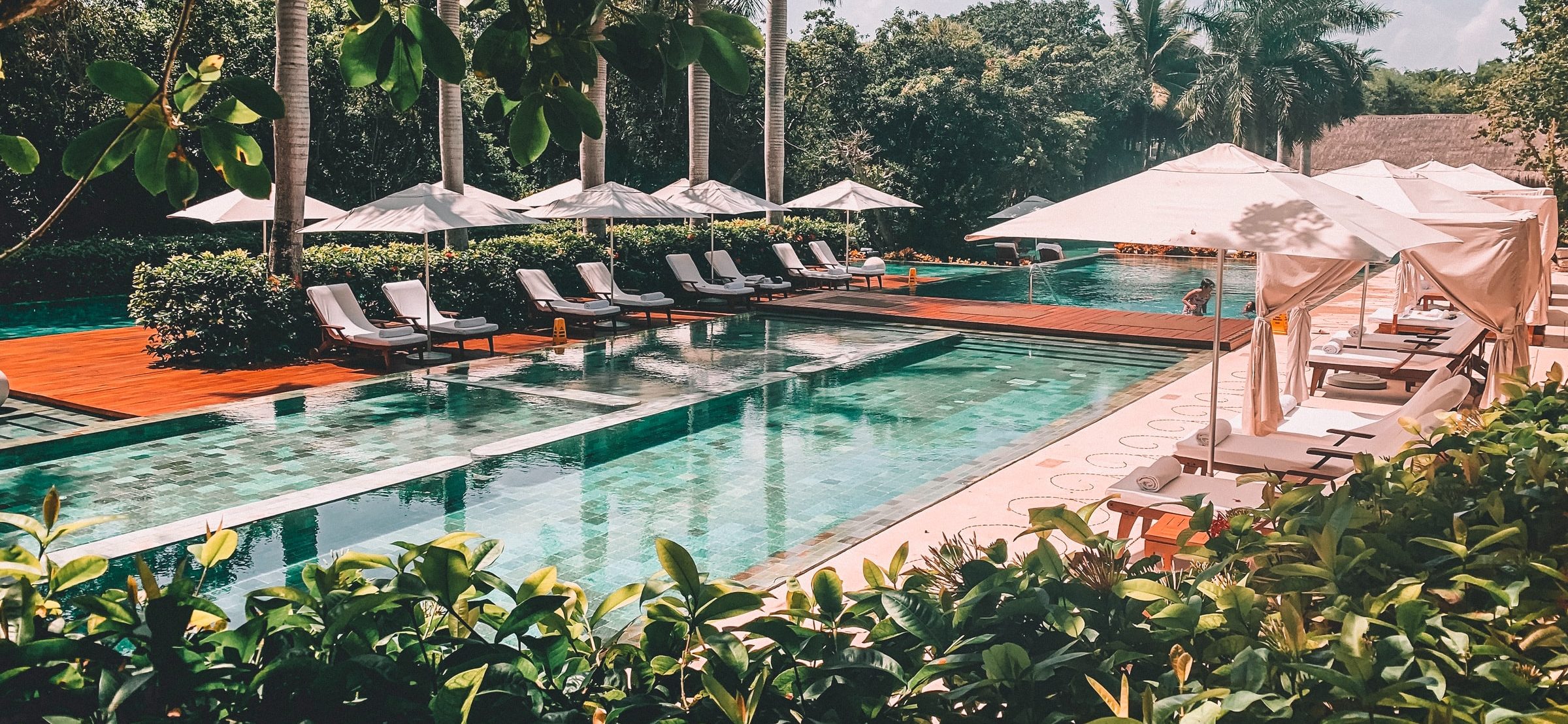
Tourists consume more water than residents and in very different quantities depending on the destinations. © Dayana Brooke-unsplash
In total, 970,000 liters were saved by reducing towel washing alone and 1.02 million were saved by extending the use of sheets. Over 1,500 water filters were installed in toilets and kitchens to allow guests to refill their We Are Water bottles, leading to the saving of more than half a ton of plastic in containers and glasses.
Last October, amidst a crisis in the industry due to the Covid-19 lockdown, architects, developers and professionals of the tourism industry corroborated the importance of these goals at the Smart Water Smart Reaction debate, which took place in the virtual room at the Expo CIHAC Digital in Mexico City.
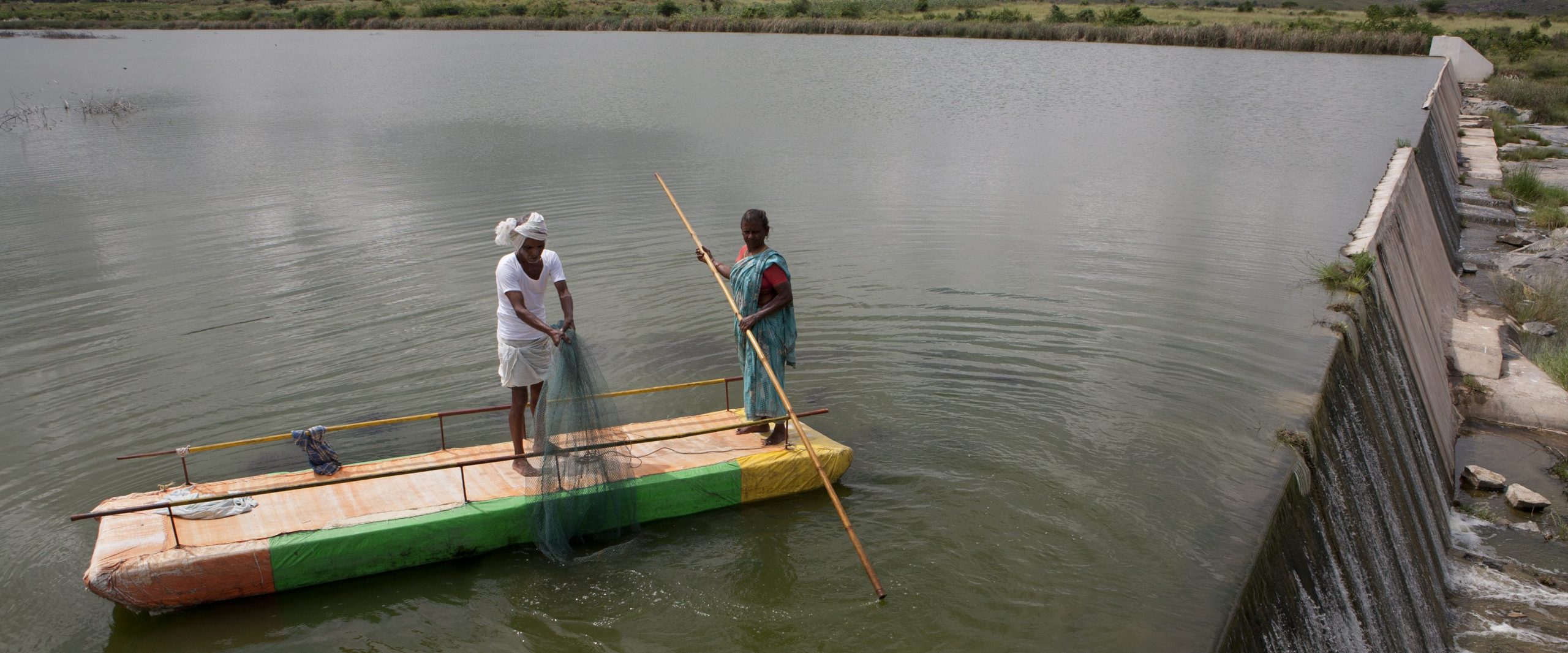
Saving millions of liters of water, raising the awareness of guests of the importance of sustainable practices and obtaining donations for aid projects in India , Guatemala and Indonesia are achievements that might have seemed overoptimistic a few years ago. © Javier Biscayar

Suzana Gomercic , senior vice president of European operations at Diamond Resorts, summarized the results of the initiative in their European facilities, pointing out that saving water had not been the only success: raising the awareness of guests and of the entire staff was much more revealing and encouraging. This was achieved with the development of educational and fun programs, such as the activities of the Aquanauts program for children and their families. Gomercic highlighted: “Combining sustainability and fun activities is ideal to raise awareness of cooperation and create positive habits that guests took home with them. Proof of the success is that we have managed to raise 40,000 euros in donations for the projects of the Foundation. We really managed to bring the message to life”.
More water is spent at the hotel than at home
Saving water is the first step towards a sustainable tourism industry. It is generally acknowledged that tourists consume more water than residents and in very different quantities depending on the destinations. The World Tourism Organization ( UNWTO ) states that in European hotels, every guest consumes on average around 394 liters per night; in Hong Kong, Singapore, Indonesia or Thailand, the average rises sharply to 677 liters, while in Barbados the figure rockets to 839 liters.
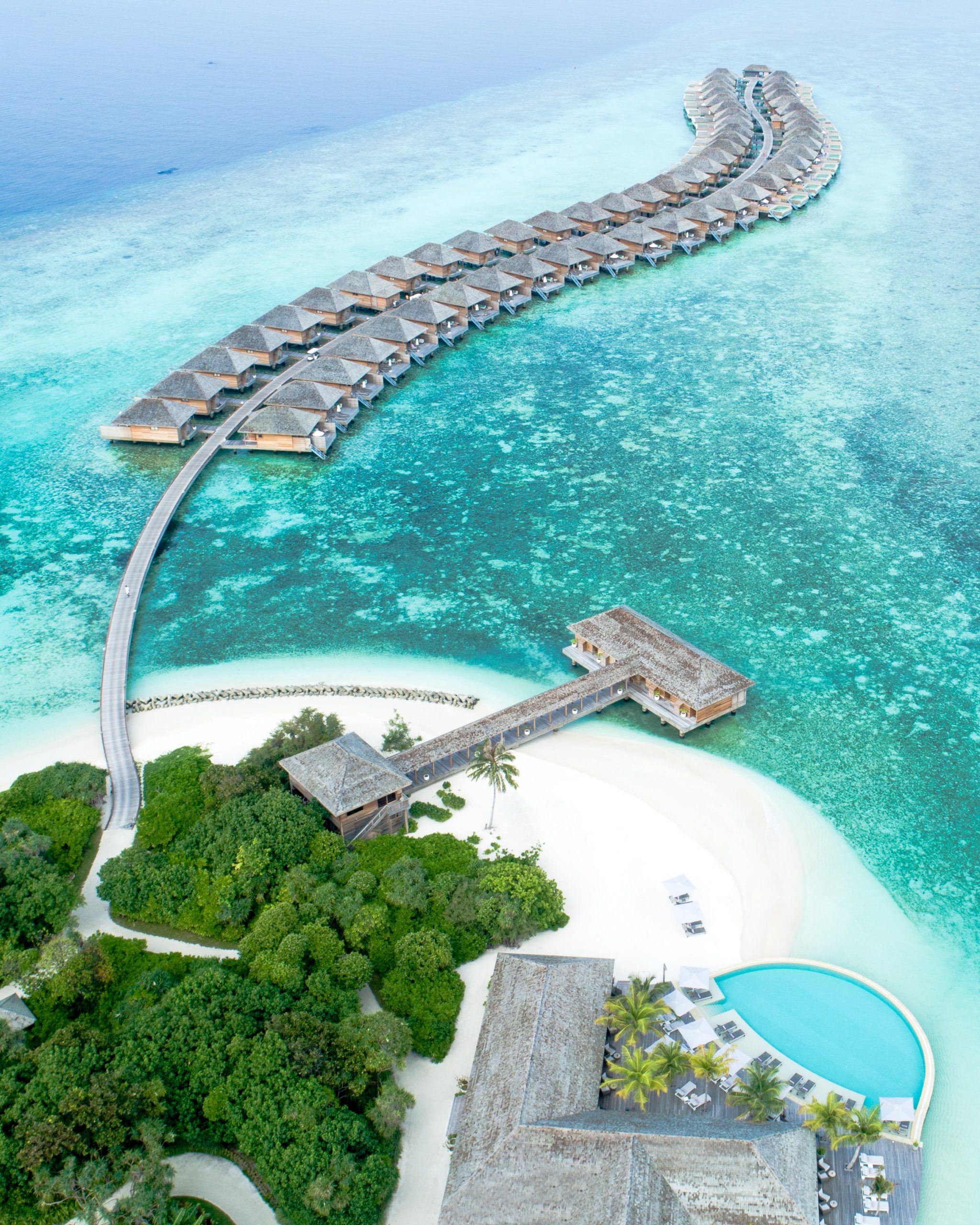
Sustainable tourism is one of the key industries for international economic recovery after the pandemic . © Shifaaz Shamoon-unsplash
If we compare this data to the consumption of guests in their homes, the contrast is striking: an average European consumes between 120 and 150 liters per day at home. If we consider the case of a citizen in Barcelona or Copenhagen, which consumes around 105 liters per day, one of the lowest consumptions in Europe, we see that they can multiply that consumption by four during their holidays in a Mediterranean hotel and by eight if they spend their vacation in a hotel in Barbados. In tourist destinations, per capita water consumption greatly increases when compared to domestic use.
These data are “per capita”; if we consider consumptions per room, in 2017, in tourist facilities in these countries, the usual consumption reached an average of 2,000 liters per day and in some cases even exceeded 3,400 liters per day.
Unsustainable pressure for many regions in the world
International tourism responds to the sun-and-beach claim: 85% of international tourists go to places with water scarcity, with a tendency to concentrate in the summer season in the northern hemisphere, as this is the part of the world that generates the most holiday travelers. The impact on the water resources of local communities is very high.
Recent research has provided in-depth analysis of consumption, offering data that must lead to reflection. Three months before the global lockdown, the University of Palma de Mallorca published a must-read study that advocates an urgent change in the management of water and in the environmental responsibility of hotel owners and tour operators.
These are recommendations that make up the conclusions of the experience of Let’s Make a Deal. The laundry service is an area with a high consumption of water and this is proportional to the number of stars of the facilities. In 3-star hotels it reaches a minimum percentage of 12% of the total consumption, but in luxury hotels located in tropical regions it can reach up to 50% of the total water expenditure, if no measures are taken to contain the laundering of sheets and towels. In these cases, the laundry service is the activity with the highest consumption.
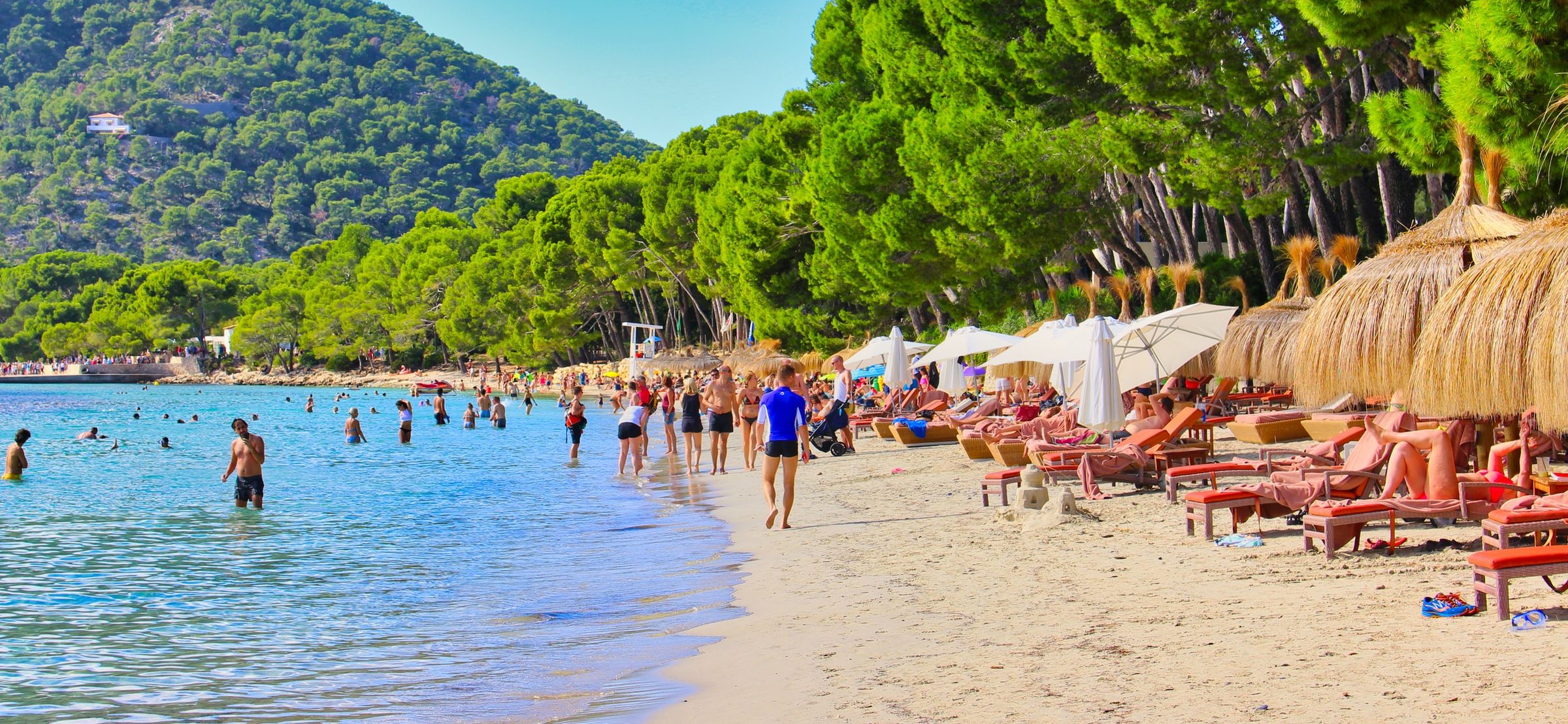
International tourism responds to the sun-and-beach claim: 85% of international tourists go to places with water scarcity. © dj Nick Otronic-unsplash
On the other hand, water consumption is correlated to electricity use. Efficient management measures and the use of recent technological resources can save an important amount of liters and kilowatts. A study by British and Spanish researchers estimates that a hotel with 100 rooms can save at least 227 liters per room and night by implementing the right measures. That hotel could save up to 16,573 m 3 of water, 209,541 kWh of energy and 58,436 euros every year.
Encouraging guests to reuse towels and bed sheets and to reduce the duration of their showers can save millions of liters of water all around the world; and many more if WCs with partial flush or faucets with flow limiters are installed. Water sustainability takes a step further in new hotels and resorts , which opt for water recycling for irrigation, the adoption of native flora in gardening, and the collection of rainwater for ecological vegetable gardens. The architecture and design of new tourist destinations are fully embracing smart technologies, using automatic systems that adjust water pressure, detect leaks and monitor consumption.
The tourism industry is aware of its incalculable potential as a tool for the creation of a sustainability culture, a culture that is one of the main assets to overcome the crisis caused by the pandemic. Even before lockdown, sustainable and environmentally-friendly tourism was key to improving a fair distribution of wealth; now it is even more important. With an estimated 1.8 billion travel arrivals worldwide by 2030, the way tourists consume water will determine the sustainability of the planet.
Related insights
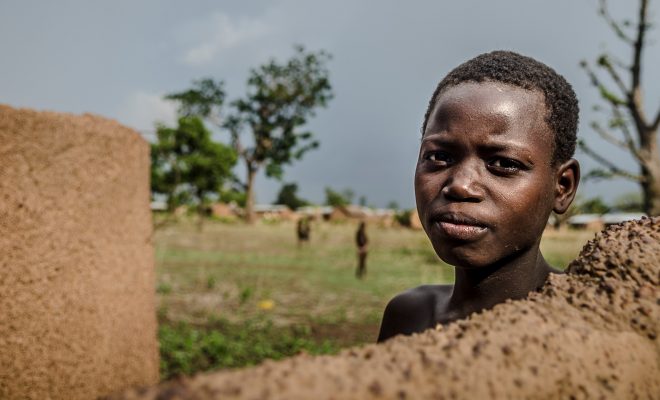
Sustainable tourism, a resilience factor
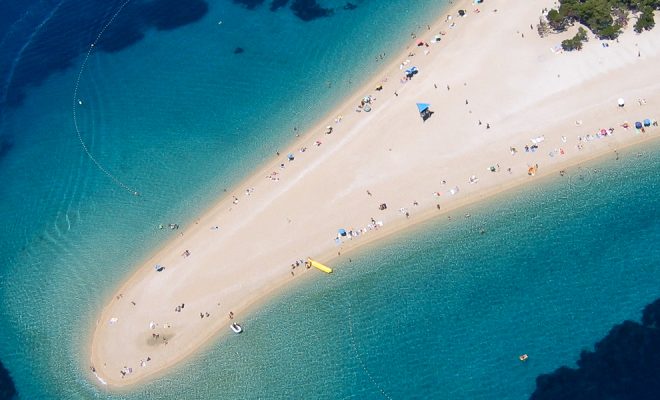
Tourism and water, a difficult relationship that should be exemplary
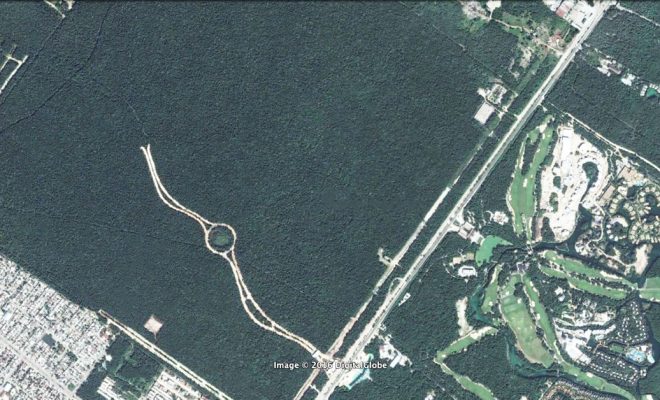
The care of water, an up and coming tourism value
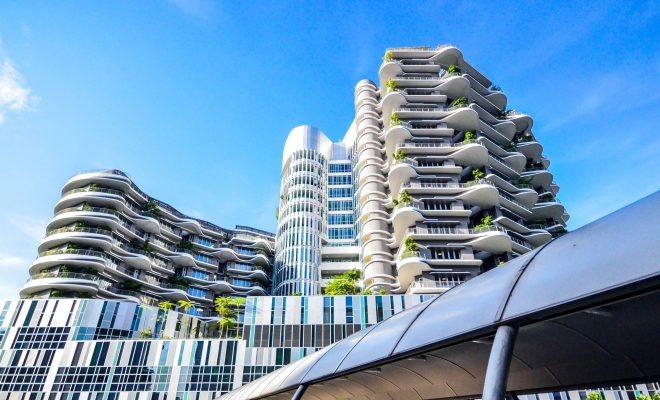
Smart Reaction: the opportunity is here and now
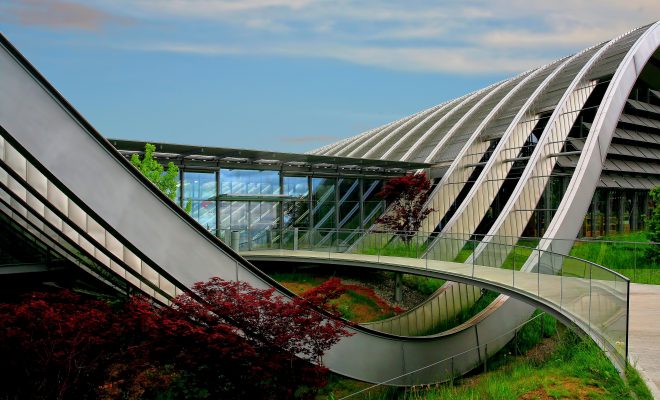
Smart Water, Smart Reaction: towards collective intelligence
Sign up to receive news about the water crisis and We Are Water projects.
" * " indicates required fields
Login and registration
Psychiatria danubina , vol. 33 no. suppl 8 , 2021..
Conference paper
RESEARCH ON WATER CULTURE OF TRADITIONAL NATIONAL RURAL CULTURE TOURISM DEVELOPMENT UNDER THE MASS PSYCHOLOGY OF NEW ECOLOGICAL ENVIRONMENT
Jian Zhu Xinxin Lu
Full text: english pdf 184 Kb
page 390-391
downloads: 73
APA 6th Edition
Zhu, J. & Lu, X. (2021). RESEARCH ON WATER CULTURE OF TRADITIONAL NATIONAL RURAL CULTURE TOURISM DEVELOPMENT UNDER THE MASS PSYCHOLOGY OF NEW ECOLOGICAL ENVIRONMENT. Psychiatria Danubina, 33 (suppl 8), 390-391. Retrieved from https://hrcak.srce.hr/268937
MLA 8th Edition
Zhu, Jian and Xinxin Lu. "RESEARCH ON WATER CULTURE OF TRADITIONAL NATIONAL RURAL CULTURE TOURISM DEVELOPMENT UNDER THE MASS PSYCHOLOGY OF NEW ECOLOGICAL ENVIRONMENT." Psychiatria Danubina , vol. 33, no. suppl 8, 2021, pp. 390-391. https://hrcak.srce.hr/268937. Accessed 15 May 2024.
Chicago 17th Edition
Zhu, Jian and Xinxin Lu. "RESEARCH ON WATER CULTURE OF TRADITIONAL NATIONAL RURAL CULTURE TOURISM DEVELOPMENT UNDER THE MASS PSYCHOLOGY OF NEW ECOLOGICAL ENVIRONMENT." Psychiatria Danubina 33, no. suppl 8 (2021): 390-391. https://hrcak.srce.hr/268937
Zhu, J., and Lu, X. (2021). 'RESEARCH ON WATER CULTURE OF TRADITIONAL NATIONAL RURAL CULTURE TOURISM DEVELOPMENT UNDER THE MASS PSYCHOLOGY OF NEW ECOLOGICAL ENVIRONMENT', Psychiatria Danubina , 33(suppl 8), pp. 390-391. Available at: https://hrcak.srce.hr/268937 (Accessed 15 May 2024)
Zhu J, Lu X. RESEARCH ON WATER CULTURE OF TRADITIONAL NATIONAL RURAL CULTURE TOURISM DEVELOPMENT UNDER THE MASS PSYCHOLOGY OF NEW ECOLOGICAL ENVIRONMENT. Psychiatria Danubina [Internet]. 2021 [cited 2024 May 15];33(suppl 8):390-391. Available from: https://hrcak.srce.hr/268937
J. Zhu and X. Lu, "RESEARCH ON WATER CULTURE OF TRADITIONAL NATIONAL RURAL CULTURE TOURISM DEVELOPMENT UNDER THE MASS PSYCHOLOGY OF NEW ECOLOGICAL ENVIRONMENT", Psychiatria Danubina , vol.33, no. suppl 8, pp. 390-391, 2021. [Online]. Available: https://hrcak.srce.hr/268937. [Accessed: 15 May 2024]
https://hrcak.srce.hr/268937
Publication date:
22.12.2021.
Visits: 179 *
UN Tourism | Bringing the world closer
Share this content.
- Share this article on facebook
- Share this article on twitter
- Share this article on linkedin
UN Tourism Calls for Cross-Cultural Dialogue and Climate Actions in Tourism
- All Regions
UN Tourism has joined leading international organizations and government leaders at the World Forum on Intercultural Dialogue, held in Baku around the theme of "Dialogue for Peace and Global Security: Cooperation and Interconnectivity."
The sixth edition of the Forum forms part of the "Baku Process", launched by President Ilham Aliyev in 2008, brought together more than 700 participants from 107 countries, including 60 Ministers of Culture. Serving as the sector’s voice, UN Tourism held a special session on the sector’s role in fostering connections in post-conflict societies, with reference to Bosnia & Herzegovina, Colombia, and Rwanda.
Opening the main high-level forum, UN Tourism Executive Director Zoritsa Urosevic said: “At UN Tourism, we have a duty to foster people’s desires to discover the world, making the unknown more inviting and building new connections between strangers, and also to give back to tourism the power to build bridges, because Tourism Opens Minds.”
Participating in the 3rd High-Level Meeting of International Organizations on Sustainable Pathways for a Greener Future, Ms. Urosevic highlighted UN Tourism’s commitment towards transforming the sector. She concluded: “As we look ahead to COP29 in Baku and future collaborations, I encourage all stakeholders to join us in the transformation of the tourism sector for a greener future. Our value chain cuts across various sectors, offering numerous opportunities to catalyze change for a more sustainable future.”
Top forum for international cooperation
The primary objective of the World Forum on Intercultural Dialogue is to explore the critical intersections between dialogue facilitation, cooperative frameworks, leadership efficacy, and the complex dynamics of interconnectedness, all in the service of advancing global peace and security imperatives. Over three days, a series of plenary sessions and panel discussions brought together a diverse range of stakeholders, including government officials, representatives from international organizations, eminent cultural figures, journalists, civil society actors, and intellectuals from across the globe, to deliberate upon pressing global challenges. Joining UN Tourism partnership in Baku were representatives of the United Nations Alliance of Civilizations (UNAOC), UNESCO, and the Islamic World Educational, Scientific, and Cultural Organization (ICESCO).
Tourism and the Baku Process
Building upon the legacy of previous iterations of the forum held in 2011, 2013, 2015, 2017, and 2019, which collectively comprised more than 250 events and attracted nearly 10,000 participants from 180 countries and 30 international organizations, the 6th edition of the World Forum on Intercultural Dialogue aimed to further solidify the "Baku Process" as a preeminent international platform for fostering intercultural collaboration and dialogue.
The significance of the "Baku Process" has been duly acknowledged by major international bodies, with the United Nations Secretary-General's Annual Report of 2017 to the United Nations General Assembly on intercultural and interreligious dialogue recognizing it as a pioneering initiative in advocating for dialogue among cultures. Subsequently, the United Nations General Assembly unanimously adopted a resolution acknowledging the "Baku Process" as a pivotal global mechanism for promoting intercultural dialogue. Furthermore, at its 215th session, the Executive Board of UNESCO passed a resolution voicing robust support for the "Baku Process" and urging all member states and major international organizations to actively engage with it.
Related links:
- Download News Release on PDF
- Tourism Peace Session
- Baku Forum 2024
- Climate Action
Cross-Cultural Dialogue and Climate Actions in Tourism
Un tourism session, related content, over 260 applications from 60+ countries: best tourism ..., un tourism puts spotlight on investments and empowermen..., un tourism and icca partner around sustainable developm..., un tourism launches women in tech startup competition: ....

- Northern Ireland
- Hurling & Camogie
- GAA Fixtures & Results
- Personal Finance
- Holidays & Travel
- Food & Drink
- Irish Language
- Entertainment
- Opens in new window
Narrow Water bridge offers huge potential for cross-border cooperation - The Irish News view
Massive tourism, economic and cultural benefits from linking the mourne and cooley regions.
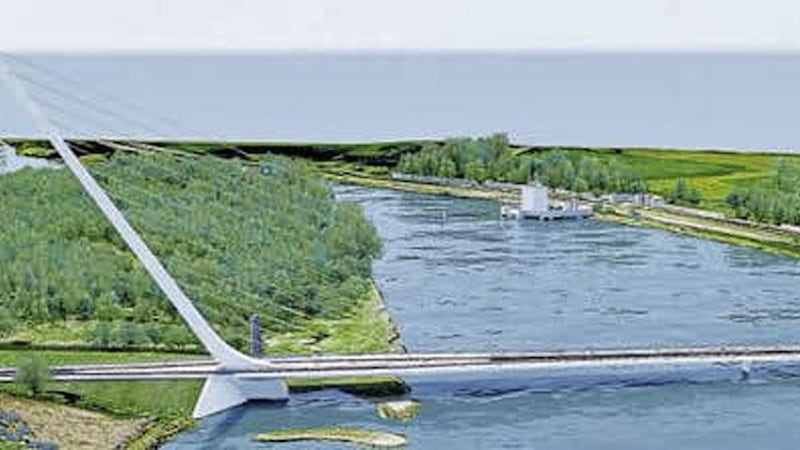
The campaign to link counties Down and Louth through a cross-border bridge at Narrow Water has been an exceptionally long running one and there will be huge relief that it is finally on the brink of a successful outcome .
Although it covers a relatively short stretch of water, and makes perfect sense at different levels, the project has been caught up in a range of serious issues over the years.
People in the area had cherished the aspiration for many decades , and discussions between councillors in the then newly created Newry and Mourne local government district and their counterparts in Co Louth reached a detailed stage almost half a century ago.
- Rwanda scheme and Illegal Migration Act should never have applied in NI - The Irish News view Opens in new window
- Politics is the both the source and solution to migration concerns - The Irish News view Opens in new window
- Jamie Bryson data breach another deep embarrassment for PSNI – The Irish News view Opens in new window
However, the carnage caused by the IRA’s Narrow Water bombing of 1979 , the deadliest attack on the British Army in the course of the Troubles, effectively ended all considerations for a prolonged period.

Brian Feeney: Old habits of secrecy die hard for PSNI

Eventually, as we entered a new era of peace and progress after the 1998 Good Friday Agreement, plans for the bridge took shape again with the support of the Belfast and Dublin administrations.
It has always presented massive potential for the development of tourism between the adjoining Mourne and Cooley regions, and would create new jobs, attract fresh investment and provide a major economic boost.
The construction would also bring environmental benefits by sharply reducing congestion in Newry city as well as exemplifying the advances made since our darkest days.
A 280m span anchored by two towers and connecting the A2 Newry to Warrenpoint dual carriageway with the R173 in Omeath is becoming a reality. It is likely to cost some £60m, an outlay which can be completely justified
It looked as though a breakthrough had been made when design options were published in 2008 but it soon became clear that some unionist figures were deeply unenthusiastic about the entire strategy.
Delays and complications surfaced, the initially modest costs increased, concerns grew in the Dáil about the final bill and a timescale for completion appeared as far away as ever.
Fortunately, Narrow Water was included in the north’s 2020 New Decade, New Approach blueprint, the south’s Shared Island fund offered further backing, the construction contract was awarded in recent days and work should at last commence within weeks.

A 280m span anchored by two towers and connecting the A2 Newry to Warrenpoint dual carriageway with the R173 in Omeath is becoming a reality.
It is likely to cost some £60m, well over twice the likely sum if decisions had been reached back in 2008, but still an outlay which can be completely justified.
When the bridge opens, it will be a tribute to the vision of those who first conceived the idea and also symbolise the enormous benefits which can follow as a consensus is reached on initiatives reflecting true all Ireland cooperation.

Rwanda scheme and Illegal Migration Act should never have applied in NI - The Irish News view

Politics is the both the source and solution to migration concerns - The Irish News view
Jamie Bryson data breach another deep embarrassment for PSNI – The Irish News view

Police snooping scandal represents direct challenge to freedom of press - The Irish News view

Covid Inquiry: Without proper accountability we are doomed to dysfunction - The Irish News view

IMAGES
VIDEO
COMMENTS
In December 2011, the Ministry of Water Resources promulgated the outline of water culture construction plan (2011-2020), which proposed to strengthen the protection and utilization of water conservancy heritage, attaching great importance to the protection of both material and intangible water culture heritages.
the progress of the current era and the development of water culture of the huge tourism market potential, through the national culture of water culture research and construction can continue to meet people s growing spiritual needs, thus becoming an integral part of cultural development (Wilkinson and Richardson, 2019).
Although water and cultural heritage are linked through complex interrelationships, each is approached from siloed perspectives. ... with different specialists dedicated to investigating drinking water, tourism and recreation, nature and biodiversity, transport and mobility, safety and security, and so on. Top-down approaches dominate all of ...
2021: The Value of Water. 2022: Groundwater. 2023: Partnerships and cooperation. 2024: Water for prosperity and Peace. See more +. The often-intangible nature of some sociocultural values attributed to water regularly defies any attempt at quantification but, nevertheless, can be regarded amongst the highest values.
The empirical research investigated the relationship between tourism development and environmental suitability to propose a framework for sustainable ecotourism. The framework suggested a balance between business and environmental interests in maintaining an ecological system with the moderating help of government support and policy interventions. The study population encompasses tourism ...
Culture and eco-tourism are considered as niche tourism markets with enormous potential for growth. There is an increasing request and a growing market for targeted tourism with strong interactions in the triangle nature, culture and people. Cultural tourism is currently 35-40% of all international trips and is growing by 15% each year.
In the new ecological environment era, the study of water culture developed by national cultural tourism, along with the common beliefs agreed upon in national cultural tourism and the aesthetic manifestations and historical relics caused by the infection caused by the water environment, these are the spiritual and material wealth related to ...
Water Culture in the Development of National Cultural Tourism under the New Ecological Environment. October 2020. Journal of Coastal Research 104 (sp1) DOI: 10.2112/JCR-SI104-130.1. Authors ...
the tourism connotation. Water Culture Sports Tourism Has Good Prospects for Development at the Moment Throughout the domestic water culture tourism data, the number of tourists showing an increasing trend year by year, due to the tedious nature of urban life, mountain and water tourism in UHFHQW\HDUVKDVXQGRXEWHGO\EHFRPHDWRXULVWKRW 6SHFL¿FDOO\
Bali's water crisis is worsening from tourism development, population growth and water mismanagement, experts and environmental groups warn. Water shortages already are affecting UNESCO sites, wells, food production and Balinese culture and experts say the situation will deteriorate further if existing water control policies are not enforced ...
Through the transformation of buildings, vegetation, and water bodies in Shinan Water culture tourism zone, the efficiency of water-bearing forest is improved. The dust-holding capacity of rivers is conducive to the degradation and dilution of concentration of some pollution sources and the improvement of water ecosystem function and water ...
The rise of a new 'water culture' can have beneficial effects on both individuals' health and on tourism destinations' economies. Therefore, it is important to assess the potential of these tourism experiences linked to water and health and their impact on outcome variables such as the tourists' satisfaction, loyalty and quality of life.
In the new ecological environment era, the study of water culture developed by national cultural tourism, along with the common beliefs agreed upon in national cultural tourism and the aesthetic manifestations and historical relics caused by the infection caused by the water environment, these are the spiritual and material wealth related to ...
The study of human settlement environment, especially the complete study of human settlement environment in mountainous region, is a huge systematic project, which involves almost all aspects of human knowledge system at the semantic level. It is an ...
Saving water is the first step towards a sustainable tourism industry. It is generally acknowledged that tourists consume more water than residents and in very different quantities depending on the destinations. The World Tourism Organization (UNWTO) states that in European hotels, every guest consumes on average around 394 liters per night; in ...
Abstract. Water culture heritages in China are numerous and diverse with unbalanced regional distribution. Due to natural and human factors, some of the water culture heritages are disappearing gradually. In view of this situation, it is urgent for relevant government departments to strengthen supervision of these sites and increase investment ...
This webpage provides UN Tourism resources aimed at strengthening the dialogue between tourism and culture and an informed decision-making in the sphere of cultural tourism. It also promotes the exchange of good practices showcasing inclusive management systems and innovative cultural tourism experiences.. About Cultural Tourism. According to the definition adopted by the UN Tourism General ...
research on water culture of traditional national rural culture tourism development under the mass psychology of new ecological environment.
Uneven Distribution of Water Culture Heritage. Due to geographical, climatic, political, economic, historical and other natural and social reasons, the distribution of water culture heritage in space and time is greatest in the south and east of China. In the northern region, there is less river runoff, less rainfall, less perennial drought and ...
24 Mar 2023. UNWTO emphasized tourism's commitment to contributing to the acceleration of SDG6 on Water and Sanitation. At the United Nations 2023 Water Conference, the World Tourism Organization (UNWTO) provided substantial inputs, underscoring the role of tourism in safeguarding water resources and contributing to the acceleration of ...
ABSTRACT. Yang, W.H. and Lin, Y.G., 2020. The water culture sports tourism creation strategy of the unique geographical environment of the Minjiang River. In: Guido Aldana, P.A. and Kantamaneni, K. (eds.), Advances in Water Resources, Coastal Management, and Marine Science Technology. Journal of Coastal Research, Special Issue No. 104, pp. 742-745. Coconut Creek (Florida), ISSN 0749-0208As ...
It brings a new idea for the development of mountain tourism real estate and puts forward the direction and method of planning. The common tourist terrain. 3D image technology-based water culture ...
Bali's tourism-related water demand surged 295 per cent from 1988 to 2013, with the average tourist consuming three times more water than local residents. The province loses roughly 1,850 acres of farmland to tourism annually. "The island's tourism continues to boom — but for whom? Bali's water crisis is so much more than a water ...
8 May 2024. UN Tourism has joined leading international organizations and government leaders at the World Forum on Intercultural Dialogue, held in Baku around the theme of "Dialogue for Peace and Global Security: Cooperation and Interconnectivity." The sixth edition of the Forum forms part of the "Baku Process", launched by President Ilham ...
Massive tourism, economic and cultural benefits from linking the Mourne and Cooley regions Expand The much-delayed Narrow Water bridge project is due to get underway within weeks